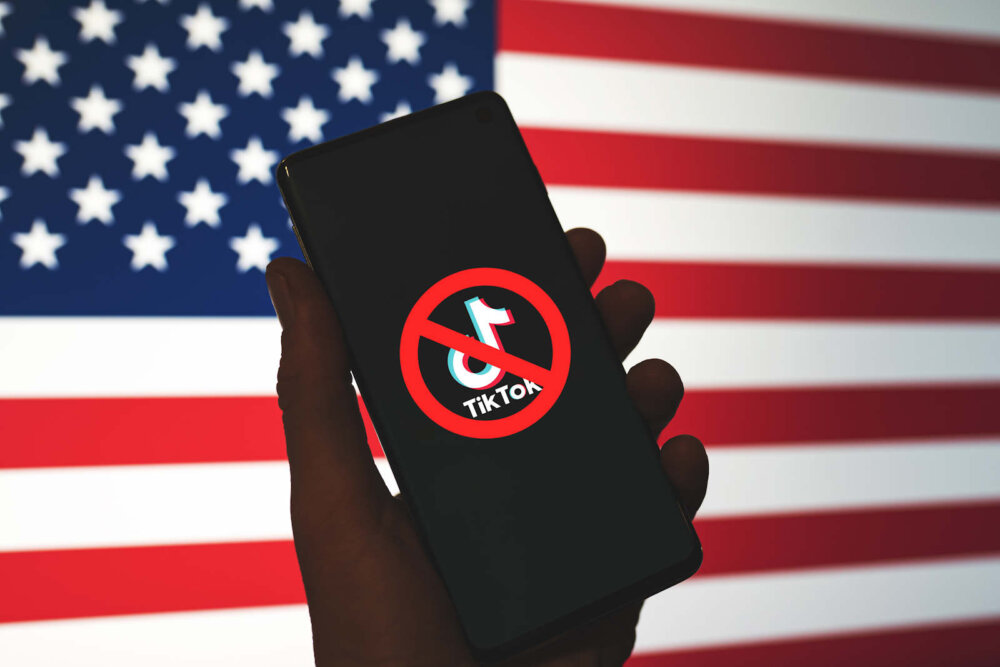
Elon Musk has captured the bird: now he must use the API to set it free
When Elon Musk bought Twitter, I was secretly optimistic.
“Sure, he’s intensely annoying,” I reasoned to myself, “But he’s not just a business guy looking for a business opportunity. He actually uses Twitter, so perhaps he’ll want to make it better.”
Needless to say, this opinion did not age well, from the moment Musk tweeted “the bird is freed”.
Like everyone, I watched with an increasing sense of horror as he meddled with the Twitter platform, making significant product decisions with seemingly little thought or deliberative process. He was testing to destruction the Silicon Valley maxim of “move fast and break things”.
Changes came thick and fast. There was the launch of paid “blue tick” verification, which upended and undermined the account verification system. Twitter tweaked the “For You” algorithm multiple times, leading to one baffling evening when every single tweet featured was by one Elon Musk. And it rewrote the platform’s rules on the fly, seemingly in a desperate attempt to shut down journalistic criticism of Musk.
It was clear then, and remains today the case that with Musk at the helm, Twitter is in a precarious place. And pathetically, the chaos genuinely scares me on a slightly existential level.
Twitter obsessive
Because I work in the media, and because my brain is thoroughly broken after 17 years of compulsive doom-scrolling, Twitter is incredibly important to me. It’s my professional networking tool, it’s how I promote my work, and worst of all it is the place where I socialise online[1]. I even met my partner of 13 years not by using some modern dating app like young people do today, but the old-fashioned way: by sliding into her DMs on Twitter.
However, there was one change that sent a cold shiver through me like no other: When one day I logged on to Twitter – or more precisely, onto my third-party Twitter app of choice, Tweetbot – and discovered that it could no longer communicate with Twitter’s servers.
Musk, it turns out, had pulled the plug on Tweetbot’s access to the Twitter API. This stands for “Application Programming Interface”, is the technical means by which other services and clients can connect to Twitter’s servers to read and post tweets. And since the beginning, Twitter has made it broadly accessible so that outside developers can build Twitter apps, bots and widgets.
So if you’ve ever connected an app to your Twitter account, or used a client like Tweetbot instead of the official Twitter app, then you’ve taken advantage of the API.
And if you’ve ever learned the latest news from @BBCBreaking, or stifled laughter on the bus while reading the confession account @Fesshole, then you’ve enjoyed tweets that were not posted manually by a human, but by someone else’s custom-written code interacting with the API.
Power of API
Behind the scenes, the API is one of the core components that has made Twitter such a useful and effective platform over the past two decades. Blocking Tweetbot was just the beginning, as Twitter’s developer account quickly announced new rules for API access.
Essentially, the era of fairly open API access is over. Under the API rules, developers must pay more money to access the API, starting from $100/month for basic access. Twitter is abolishing the paid premium tier for medium-sized use cases, forcing some developers to pay the big bucks for Enterprise access instead.
To be clear, Twitter has always charged for some forms of access, particularly for high-volume, big corporate access. And under the new changes it has retained a free tier, but with greater restrictions: it limits tweet posting to a singular account, for a maximum of 1,500 tweets per month. But the trajectory is clear: the noose is tightening, and the API is getting more restricted.
More than anything else, I think this is the clearest sign that Musk doesn’t know what he’s got himself into – and is what risks killing Twitter more than anything else.
The API built Twitter
What’s striking about the history of Twitter is just how much the platform owes to its openness.
I know this, because I was there. Long before Stephen Fry got stuck in a lift, and before Captain Chelsey Sullenberger performed the Miracle on the Hudson, I was tweeting. I even went to London’s first “Twestival” event in Shoreditch, which was a mass meet-up of people premised on the fact that we were all on Twitter. At the time that was weird.
So I’ve seen how Twitter’s API has been a driver of innovation, with many of the platform’s core features starting as third-party projects or products. It’s no exaggeration to say that without an open API that developers could build on, Twitter would not be the platform it is today.
For example, hashtags were invented not in a boardroom but by Twitter users. And then in 2008, some early power users set up Hashtags.org, which used the API to download and filter tweets – something that wasn’t possible on the main Twitter website.
Heck, Twitter’s search functionality began life as a product recommendation site called Summize. It even invented the idea of “trending” topics – and I vividly recall the top trend being some guy called Justin Bieber, seemingly every day in 2008.
Move to mobile
The transition to mobile was also led by third-party apps. In fact, the apps we use to access Twitter today started life as third-party creations: the Twitter app for iPhone and Mac was originally a third-party client called Tweetie, before it was acquired by Twitter. And TweetDeck, a more advanced interface used by social media managers and the most hardcore users, began life as a British startup before Twitter bought it.
The actual tweets we read often originate from apps that take advantage of the API, whether that’s our smuggest friends sharing their Strava runs or journalists tracking flights made by dictators.
I’ve even made my own small contribution to the discourse using the API. During the Trump years, I created and ran @TrumpsAlert, a bot which automatically tweeted out whenever Donald Trump or his family liked a tweet, or followed/unfollowed an account[2].
On a more boring level: if you’ve ever used Twitter to have a go at customer services, or had to tweet in a professional capacity on behalf of an organisation, then the chances are that you’ve also interacted with the third-party tools that use the API to manage queries or monitor analytics.
This is all to say that over the years, from both a content and product perspective, Twitter’s fairly open approach to its API has proven itself time and time again to be extremely valuable. It has enriched Twitter’s functionality, and made the platform a more useful and better place to be, beyond anything Twitter can manage on its own.
A strange decision
What’s especially mystifying about the decision to limit API access is who it hurts most: me. But also people like me – the power users who provide such disproportionate value to Twitter as a platform.
It’s thought that it is the top 10% of Twitter users who are responsible for 80% of the tweets on the service. It is our hard work, toiling down the content mines, that creates much of the content that everyone else logs onto Twitter to consume. And it is us power users who are, almost by definition, much more likely to actually use third-party apps and tools for both consuming tweets and creating them.
If you’re a casual user, the sort of person who isn’t constantly plugged into Twitter, then first of all may I congratulate you on your well-adjusted life and balanced mental health. But secondly, this means that you’re almost certainly just using the official Twitter website or app. You’re already viewing the adverts, and it is in your much vaster numbers that you’re the ones earning Twitter the advertising revenue it needs to survive.
So I think it’s fairly obvious that imposing new restrictions on the API is going to disproportionately hurt the people Twitter needs the most.
Imagine if YouTube or TikTok were to charge creators to upload videos on their platforms. Such a move would obviously be self-defeating for the platforms. That’s why instead both platforms monetize consumption and not creation, by showing us advertising when we consume content on the platform.
But this is, by slightly tortured analogy, exactly what Twitter is doing with its API. By imposing more restrictions, it is making it harder to build on Twitter as a platform, and the only real upshot of this is that ultimately everyone will have slightly fewer reasons to visit Twitter in the first place.
Read James O’Malley’s take on the metaverse: it could actually be good…
Open versus Closed
Perhaps my pessimism and frustration is misplaced. There is a first time for everything.
It doesn’t necessarily follow that what worked before will work again in the future. It could be that an open API was an effective way for Twitter to fuel its initial growth, but that the rules have changed. Now that it is an established platform, consolidating its position is more important. And that means more tightly controlling and managing the user experience.
It’s also true that restricting the API won’t automatically kill all of the third-party tools and apps that currently use it. Say farewell to third-party clients that offer a fairly straight replica of the main Twitter app’s functionality, but chances are the big corporate apps that provide other services using Twitter data will continue working. And integration with the wares of other large companies will probably remain – at worst, they’ll just pay the ransom.
But I still think locking down the API is a flawed approach, and it goes back to the problem of designing a social experience for hundreds of millions of people. Imposing a top-down, singular experience will not work for everyone and almost by definition cannot capture the diverse range of ways that people may interact with the platform.
The limitations will also hurt hobbyists, researchers and small-time coders. That could be someone in their bedroom building a clever little bot, or an academic researcher analysing tweets en masse. And so many more tiny examples.
I also don’t think it’s a coincidence that many of the new features that pre-Musk Twitter attempted to impose from the top-down quickly crashed and burned. There were attempts to incorporate Clubhouse-style voice-chat “Spaces”, an aborted newsletter service (“Revue”), and most notoriously, “Fleets”.
(Fleets, for those lucky enough to forget, were full-screen photos and graphics that only appeared for a few seconds at a time. Because what you want in your timeline full of overweight nerds talking about politics and computing is more selfies.)
Conversely, what has tended to stick and added real value to Twitter has emerged from the bottom-up – from outside firms using the API. So restricting the API then is effectively a tax on innovation. And under the new API rules, it will be that little bit harder for developers to turn their ideas into a reality, making Twitter a less useful place to be.
Musk can still save Twitter
Pre-Musk Twitter was not a panacea. The company was losing money (and it had done for six of the eight years since it IPO’d), and the company was stuck with the same structural problem that plagues Meta and major tech IPOs. That is, even if user growth has slowed, because the company has matured or saturated a market, it must keep growing.
This is what led to the mission creep of features like Fleets. Each launched to either bring in users who weren’t attracted to the core Twitter experience, or as an attempt to increase the engagement of those who are – to keep us in the app for longer.
This logic is not unique to Twitter. It’s also why Instagram has gone from a photo-sharing platform where you pretend to lead an incredibly aesthetic life, to a knock-off TikTok, an online shop and a place to watch “Stories” (think Fleets but actually successful).
So going back to business as it once was isn’t the way forward for Twitter either. Musk clearly knows this too – but I wonder if he’s in a unique position to actually do something good, if he wants to.
As the majority shareholder, having taken the company private, he is no longer at the mercy of a sprawling and ever-changing group of investors who want growth at any cost. Instead, if he wanted he could actually make Twitter good.
Instead of locking Twitter down, Musk should use the unique position he has as sole owner of the platform to open it up. Expand API access, and give it feature parity with the official app. Empower developers to build new tools and experiences on top of the API. Let individuals and communities build or find the Twitter apps and tools that work for them. If a better Twitter app emerges (like, say, my beloved Tweetbot), then great – that makes using Twitter better.
And as for the pesky business of paying for it? Don’t charge developers up front – insert ads into the API feeds, and put in the terms of service that third parties must display them, and have them feedback analytics. Or perhaps even take a cut of the download fee when a paid third-party app becomes successful[3]. If Twitter becomes a platform on which people can build again, it’s possible that new business models will emerge as new ways of using the platform become clear.
Restricting API access means that a team of developers in San Francisco have to try to second-guess and design an app that will work for everyone in the world. This is obviously impossible. So Twitter should let everyone in the world build the experience that works for them. Twitter’s history shows that when its features are opened up, innovation happens. So it’s in that spirit, I humbly urge Elon to live up to his words when he first acquired Twitter:
Free the bird.
[1] I realise this does not reflect well on me.
[2] It was pretty cool – and arguably helped with the ‘Kremlinology’ of understanding a notoriously opaque White House. And it was also the source of numerous panic attacks, like when the bot revealed late one night that Donald Trump Jr, the eldest son, followed a porn account, and had me wondering if the CIA were about to crash through my windows and deport me to Guantanamo Bay.
[3] Note that this is why Twitter itself could do this and Mastodon is no replacement. Instead of the complications of setting up your own instances, full of potentially dodgy moderation, mind boggling complexity for normies, and needing to pay server bills, Twitter itself would maintain the core account and timeline functionality.
NEXT UP

Slow buyers cause tech firms to rethink sales approaches as tough Q1 hits home
New research suggests tech sales were slow in Q1, with buyers of technology and professional services taking their time before committing to any solutions.

ByteDance says it has no plans to sell TikTok and refuses to bow to US pressure
ByteDance, the Chinese company that owns TikTok, stated that it “doesn’t have any plans to sell TikTok” on Toutiao, a social media platform that it also happens to own.

Solace Kidisil, Group COO of Nsano: “The difference between traditional finance and fintech is the questions we ask”
We interview Solace Kidisil, Group COO of Nsano, a fintech company from Ghana, offering digital payment solutions across Africa